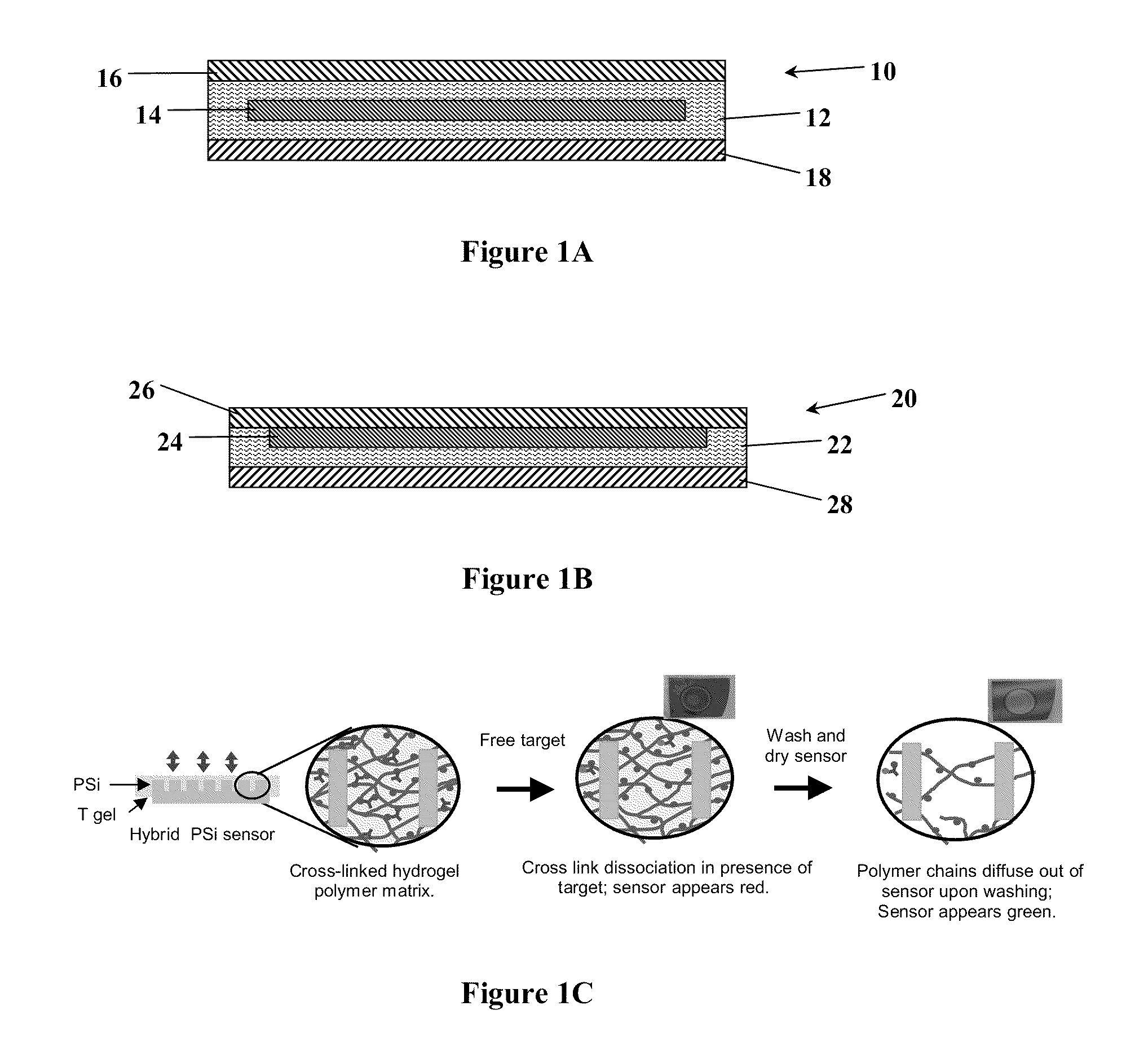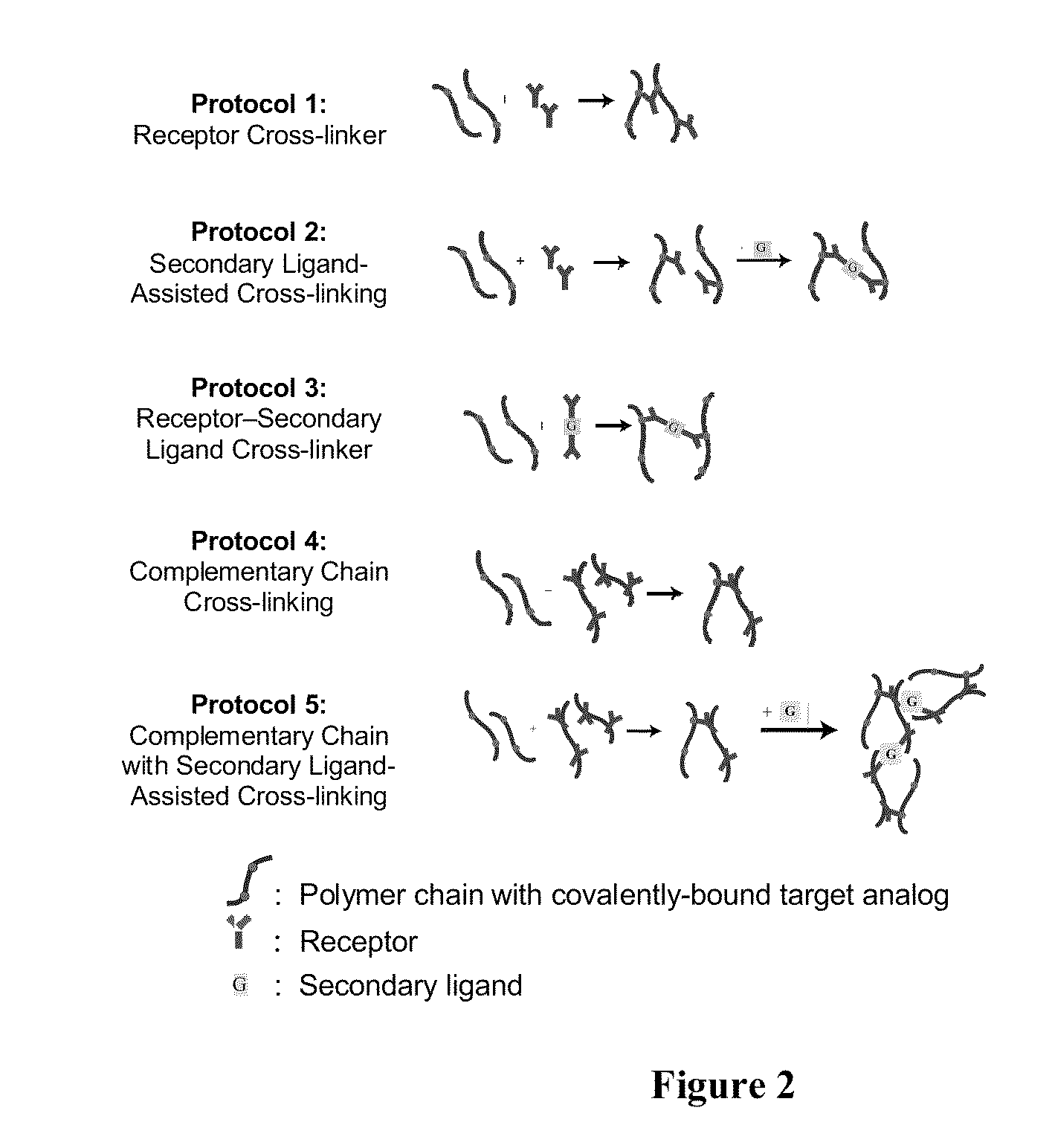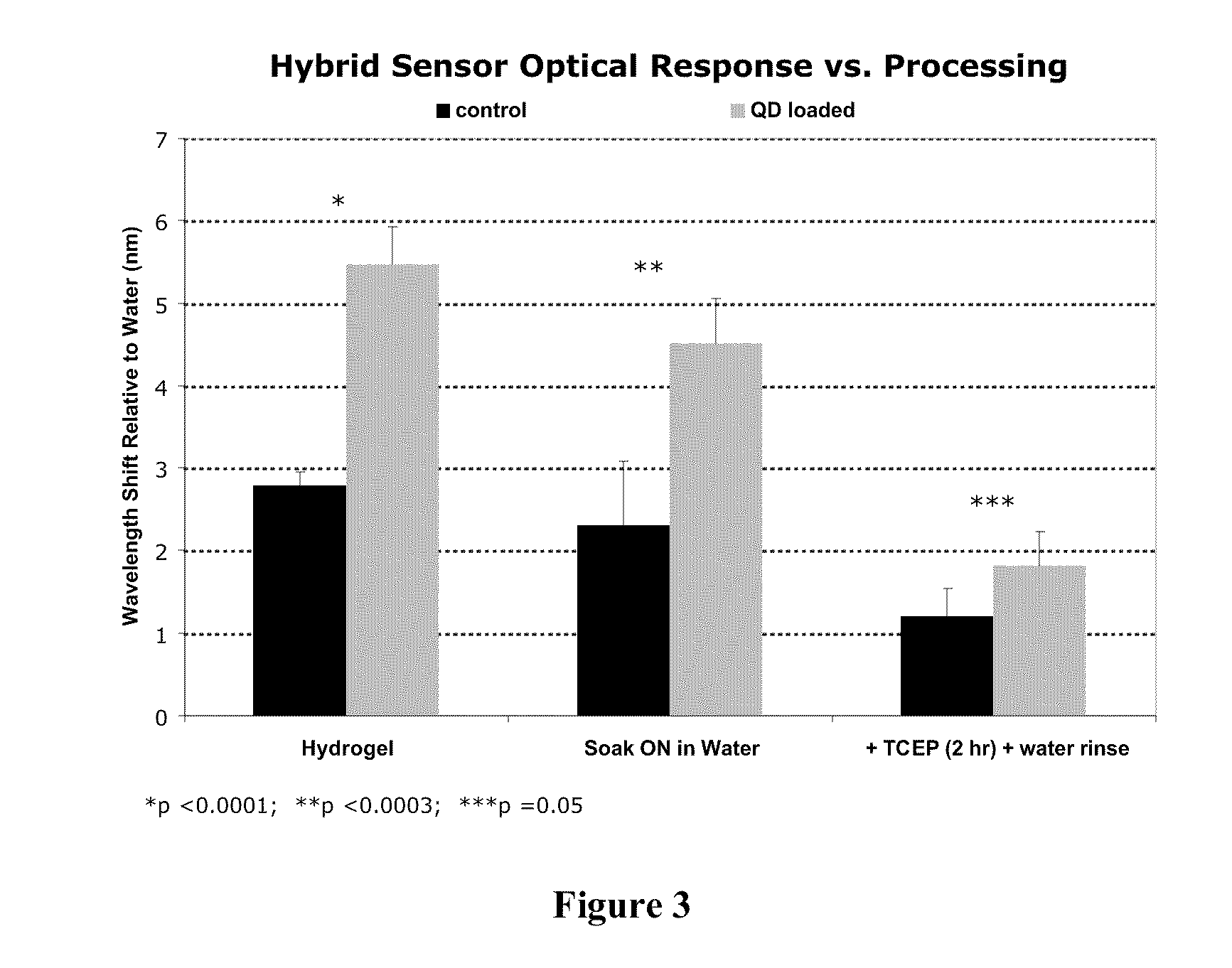Hybrid target analyte responsive polymer sensor with optical amplification
a polymer sensor and analyte technology, applied in the field of hybrid target analyte responsive polymer sensors, can solve the problems of less than acceptable, less effort has been spent on the translation of psi devices for ft/poc clinical use, and the desire for a much higher detection limit, so as to increase facilitate molecular-level interactions. , the effect of increasing the number of receptor sites
- Summary
- Abstract
- Description
- Claims
- Application Information
AI Technical Summary
Benefits of technology
Problems solved by technology
Method used
Image
Examples
example 1
PSi Transducer Substrate Preparation and Characterization
[0086]The methods employed to produce the macroporous silicon sensors used in Examples 1-6 have been described in detail elsewhere (Kilian et al., ACS Nano 1(4):355-61 (2007); DeLouise & Miller, Anal. Chem. 77(10):3222-30 (2005), each of which is hereby incorporated by reference in its entirety). Briefly, PSi mirror structures were fabricated from n+ silicon wafers (Sb doped, 0.01-0.08 Ω-cm) using a room temperature electrochemical etch process. The aqueous electrolyte contained BASF Pluronic L31 (0.1%) surfactant and hydrofluoric acid (5% HF). The mirror structure used in Examples 1-6 was fabricated with alternating current densities of 40 and 70 mA / cm2 to yield 16 alternating layers of 71 and 84% porosity with a total thickness of ˜2.9 μm measured by SEM. The PSi samples were thermally oxidized in dry O2 at 900° C. to enhance stability of the PSi and to create hydrophilic pore channels. These devices exhibit a wavelength sh...
example 2
Preparation Glutathione Coated Quantum Dots
[0087]Commercial CdSe / ZnS core / shell octadecylamine (ODA)-capped Quantum Dots™ (QDs) (620 nm emission, NN-Labs, #CZ620) in toluene were used in Examples 3-4. Glutathione-capped QDs (GSH-QDs) were synthesized in-house via a ligand exchange procedure. Efficient ligand exchange requires working with solvent systems in which ligands are readily soluble. It was observed that ODA ligand exchange does not work efficiently in toluene. Therefore, QDs were first transferred to tetrahydrofuran (THF). A 200 μl aliquot of stock QDs was added to a methanol:acetone (1:1) solution and separated by centrifugation at 14,000 rpm for 5 minutes. Toluene was decanted and QDs were resuspended in 200 μl of tetrahydrofuran (THF).
[0088]GSH was added to methanol and the pH of the solution adjusted to pH=11 with tetramethylammonium hydroxide pentahydrate ((CH3)4NOH.5H2O). The GSH methanol solution (20 mg / mL, 1 mL) was slowly added to the THF QD solution (0.25 μM, 200 ...
example 3
Preparation of Hydrogel-PSi Hybrid Sensors
[0089]For Examples 3-4, an acrylamide (AAm) polymer crosslinked with N,N′-methylenebisacrylamide (BIS) and N,N Bis-acryloyl cystamine (BAC) formulated with a molar ratio of 195:4:1 Aam:BAC:BIS was used. The measured polymer density is 1.020 g / ml. BAC contains a disulfide linkage that cleaves under suitable reducing conditions to cause swelling of the polyacrylamide (PA) gel. In this Example, 50 mM Tris[2-carboxyethyl]phosphine (TCEP) reducing agent was used. All monomers (AAm, BAC, Bis) were diluted in an aqueous 25 v / v % ethanol stock solution. The monomer stock solution contained 0.05 g AAm, 0.00376 g BAC, 0.000556 g Bis, 135.78 μL ethanol, and 407.35 μL water, to yield a 10 wt % monomer stock solution. N,N,N′N′-(Tetramethylethylenediamine) (TEMED) was added to the monomer stock solution at 2.1 wt % (1.46 μL). To prepare hybrid PSi devices, 15 μL of monomer stock solution was added to either 15 μL of water for control or 15 μL of a 17.8 μM...
PUM
 Login to View More
Login to View More Abstract
Description
Claims
Application Information
 Login to View More
Login to View More - R&D
- Intellectual Property
- Life Sciences
- Materials
- Tech Scout
- Unparalleled Data Quality
- Higher Quality Content
- 60% Fewer Hallucinations
Browse by: Latest US Patents, China's latest patents, Technical Efficacy Thesaurus, Application Domain, Technology Topic, Popular Technical Reports.
© 2025 PatSnap. All rights reserved.Legal|Privacy policy|Modern Slavery Act Transparency Statement|Sitemap|About US| Contact US: help@patsnap.com



